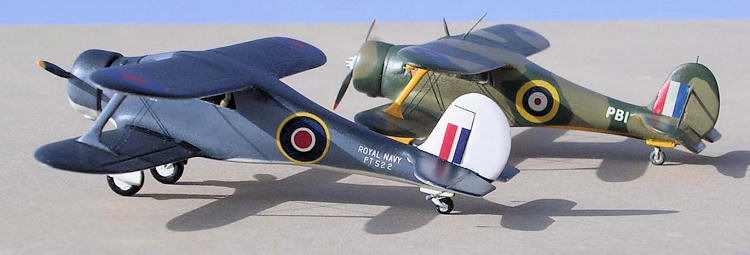
| KIT #: | ? |
| PRICE: | £3.00 |
| DECALS: | None provided. |
| REVIEWER: | Carmel J. Attard |
| NOTES: | Vacuformed kit. Canopy by Pavla |

| HISTORY |
A key to the Beech Aircraft
Corporation early success was the Beech Model 17. First flown during November
1932 the model 17R was able to demonstrate a remarkable speed range of 60-200
mph. Not only the designer ignored the trend towards the monoplane design but
had staggered the wings in opposition to the accepted layout. This gave the
pilot more visibility and provided a forward attachment point for the
undercarriage. The model 17 was ahead of its time and over half a century later
the Staggerwing as it came to be known,
still remain spotted at airfields. The layout had been selected to provide the
pilot with a good field of view. Wind tunnel tests had shown that this
particular layout offered a good combination of speed and stability.
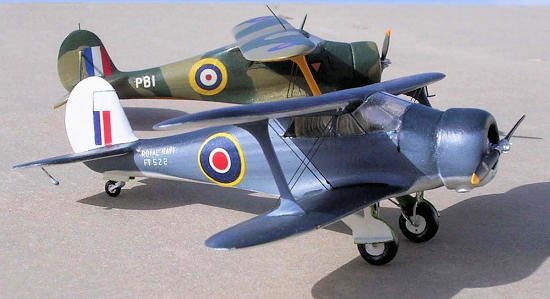 The basic
structure of the aircraft was of welded steel tube covered largely with fabric.
The narrow landing gear was unusual in that the main units were enclosed within
large streamlined fairings with provision of wheels to be retracted in flight so
that they were completely within the fuselage. The enclosed cabin provided
accommodation for a pilot and three or four passengers. A 420 HP Wright R-975-E2
Whirlwind radial engine was mounted within a cylindrical cowling.
In 1934 model B17L took to the air with a new lower wing of deeper
airfoil section, providing sufficient volume for main landing gear units to be
retracted fully into it. This coupled with a 225hp Jacobs L-4 radial engine,
gave much more docile handling characteristics. A little more power provided by
a 285 hp L-5 the model 17 allowed Beech to establish itself as a major aircraft
manufacturer.
The basic
structure of the aircraft was of welded steel tube covered largely with fabric.
The narrow landing gear was unusual in that the main units were enclosed within
large streamlined fairings with provision of wheels to be retracted in flight so
that they were completely within the fuselage. The enclosed cabin provided
accommodation for a pilot and three or four passengers. A 420 HP Wright R-975-E2
Whirlwind radial engine was mounted within a cylindrical cowling.
In 1934 model B17L took to the air with a new lower wing of deeper
airfoil section, providing sufficient volume for main landing gear units to be
retracted fully into it. This coupled with a 225hp Jacobs L-4 radial engine,
gave much more docile handling characteristics. A little more power provided by
a 285 hp L-5 the model 17 allowed Beech to establish itself as a major aircraft
manufacturer.
A wide variety of Beech 17s were
built for both civil and military use in a steadily improving series of
varieties. With the expansion of the USAAF during 1941-42 an initial order for
27 was placed. This led to a total procurement of 207 Beech 17 designated UC-43.
With the
| THE KIT |
Rareplanes have provided a decent
replica of the Beechcraft 17 Staggerwing over the years. I managed to acquire
two of these models some 3 years ago and I have since built both of them. The
all vacform parts have finely detailed surface and come on one sheet of white
acetate. There is provision of a
clear canopy
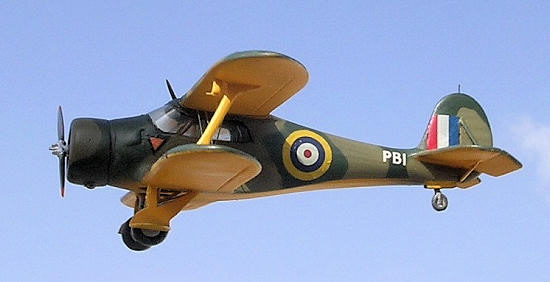 and a spare
one too also vacform but in clear acetate. The kit contains full cockpit floor
and instrument panel plus seats, forward firewall and aft division bulkhead.
Items as rudder pedals, control steering wheel, and other detail to side of
walls have to be scratch built. A radial engine, cowling and a propeller are
provided and great care should be taken when separating these items from the
rest of the backing sheet. The cowling is somewhat drawn thin and certainly
needs careful work on it especially when removing the central front opening.
Being an early kit no decals are supplied, neither white metal undercarriage
legs. The windscreen of the canopy provided has the front too steep, thanks to
Pavla Models that provided a prompt replacement to the second build. This is set
‘V72-10 Beech-17s’, which was originally intended for the Sword kit of the
Staggerwing while I found it equally well suited to replace the one that comes
with the vacform kit.
and a spare
one too also vacform but in clear acetate. The kit contains full cockpit floor
and instrument panel plus seats, forward firewall and aft division bulkhead.
Items as rudder pedals, control steering wheel, and other detail to side of
walls have to be scratch built. A radial engine, cowling and a propeller are
provided and great care should be taken when separating these items from the
rest of the backing sheet. The cowling is somewhat drawn thin and certainly
needs careful work on it especially when removing the central front opening.
Being an early kit no decals are supplied, neither white metal undercarriage
legs. The windscreen of the canopy provided has the front too steep, thanks to
Pavla Models that provided a prompt replacement to the second build. This is set
‘V72-10 Beech-17s’, which was originally intended for the Sword kit of the
Staggerwing while I found it equally well suited to replace the one that comes
with the vacform kit.
| CONSTRUCTION |
The kit parts were cut lightly
around each moulded item and snapped off the excess plastic with small pliers.
All cut edges were smoothened on a flat sheet of wet and dry sandpaper, until a
good centreline joint is achieved. I was intrigued at the way Rareplanes
suggested that the undercarriage should be made. This showed how a piece of thin
wire can be used which obviously is the best way to make these as it would be
rather delicate if constructed with normal plastic rod or stretch sprue.

| COLORS & MARKINGS |
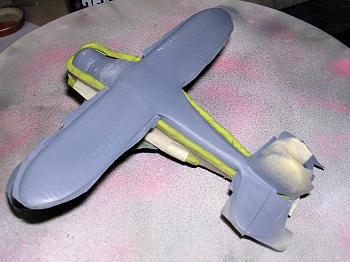 The
instructions suggest two interesting colour schemes. One is a UC-43 Staggerwing
in USAAF camouflage of olive drab upper and neutral grey lower surfaces. An
alternative scheme is a WWII Traveller I in Royal Navy colours consisting of non
–specular Sea Blue with intermediate blue sides while the undercarriage and
vertical tail white. This had red/blue roundels. I have opted for this R Navy
scheme and another one in Dark earth and brown camouflage applicable to an RAF
Beechcraft.
The
instructions suggest two interesting colour schemes. One is a UC-43 Staggerwing
in USAAF camouflage of olive drab upper and neutral grey lower surfaces. An
alternative scheme is a WWII Traveller I in Royal Navy colours consisting of non
–specular Sea Blue with intermediate blue sides while the undercarriage and
vertical tail white. This had red/blue roundels. I have opted for this R Navy
scheme and another one in Dark earth and brown camouflage applicable to an RAF
Beechcraft.
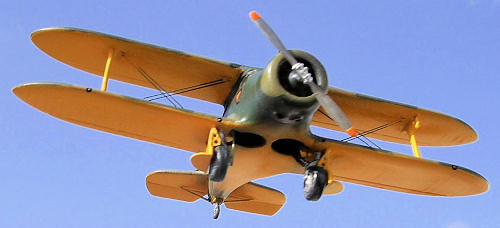 The other
Beech 17 was an ex YC-43 originally used by the American Embassy,
The other
Beech 17 was an ex YC-43 originally used by the American Embassy,
| CONCLUSIONS |
There are now injection-moulded
kits of the Staggerwing/ Traveller and in spite of this I ascertained that these
two vac-form kits turn into a pleasing replica of the type, as they deserve a
place in a historic aircraft collection.
| REFERENCES |
 Air
Air
The Encyclopaedia of World Aircraft by Paul Eden and Soph Moeng.
March 2010
If you would like your product reviewed fairly and quickly, please contact me or see other details in the Note to Contributors.